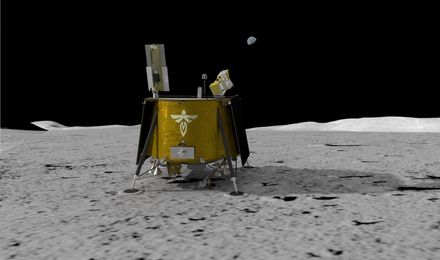In the next few years, NASA will start testing a positioning system on the moon, something that may be useful on the day we actually start colonizing our nearest neighbor. NASA has together with the Italian space agency ASI developed the instrument Lunar GNSS Receiver Experiment (LuGRE) which will be used to develop the basis for a positioning system on the moon.
In the last 50 years, several so-called GNSS (Global Navigation Satellite System) systems have been built around the earth, such as the American GPS system, Europe’s Galileo, Russia’s GLONASS and China’s BeiDou. However, NASA has no plans to build an entire satellite system around the moon to build a positioning system there. Instead, it is planned that LuGRE will be able to build the foundation for a positioning system on the moon with the help of signals from GPS and Galileo. JJ Miller, who works for NASA’s Space Communications and Navigation program (SCaN), says about LuGRE’s mission:
“In this case, we are pushing the envelope of what GNSS was intended to do – that is, expanding the reach of systems built to provide services to terrestrial, aviation, and maritime users to also include the fast growing space sector. This will vastly improve the precision and resilience of what was available during the Apollo missions, and allow for more flexible equipment and operational scenarios. “
NASA and ASI are now testing LuGRE and when it is ready, the instrument will be installed on Firefly’s lunar lander Blue Ghost. Blue Ghost can be seen as a kind of pilot for the astronaut landing that NASA plans to make during its Artemis program. In addition to LuGRE, Blue Ghost contains about ten other instruments which will be used to collect data about the moon. Originally, it was thought that Blue Ghost would take off towards the moon aboard one of the SpaceX Falcon 9 rockets next year. However, this seems to have been advanced and NASA writes in a press release that Blue Ghost will leave the earth in 2024 at the earliest.
Below is an illustration from NASA showing the coverage of a GNSS satellite in an unspecified GNSS system.
nasa.gov
Science, Space,
moon, nasa, positioning, lugre, gnss, gps, galileo, firefly, blue ghost
Via
Photo: NASA / Danny Baird
NASA and Firefly Aerospace will test stuff on the moon
Blue Ghost will go there in 2023
NASA has announced that it has commissioned the American space company Firefly Aerospace to develop a spacecraft that it plans to land on the moon in 2023, something that the company will receive $ 93 million to do. The landing is seen as a preparation for the lunar landing where NASA plans to land a man and a woman on the moon in 2024. Firefly Aerospace unmanned spacecraft Blue Ghost will carry ten different instruments and is intended to land in an area called Mare Crisium. The instruments on Blue Ghost will be used, among other things, to measure solar winds and radiation on the moon as well as to drill holes in the moon’s surface to investigate the thermals there. Firefly Aerospace is one of the nine private space companies that have been part of NASA’s Commercial Lunar Payload Services (CLPS) program since 2018. It is a program whose purpose is to involve private companies so that NASA can explore the moon more quickly.

38.5 °
.
[related_posts_by_tax taxonomies=”post_tag”]
The post NASA will test positioning systems on the moon. Will use signals from GPS and Galileo. appeared first on Gamingsym.
